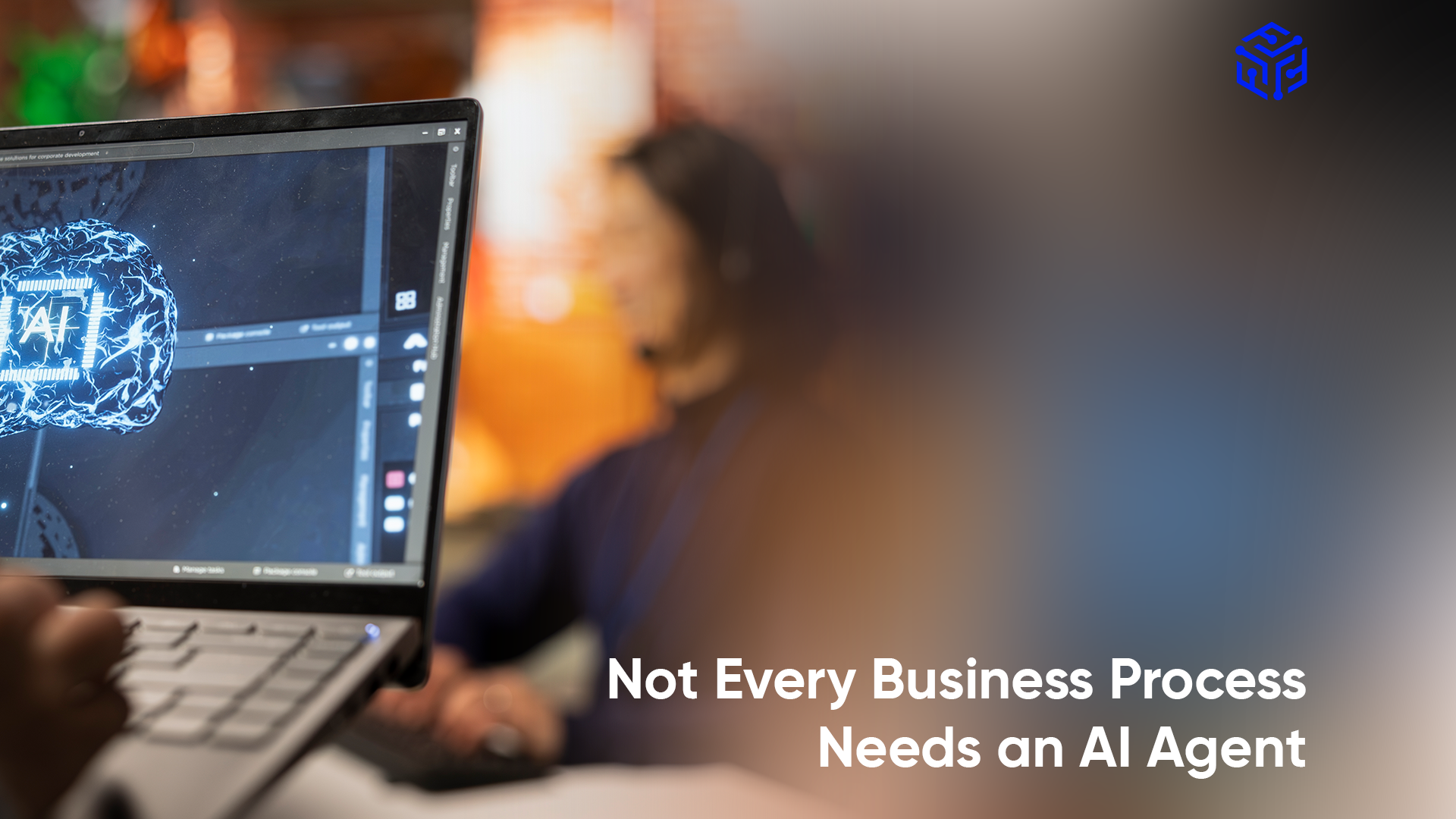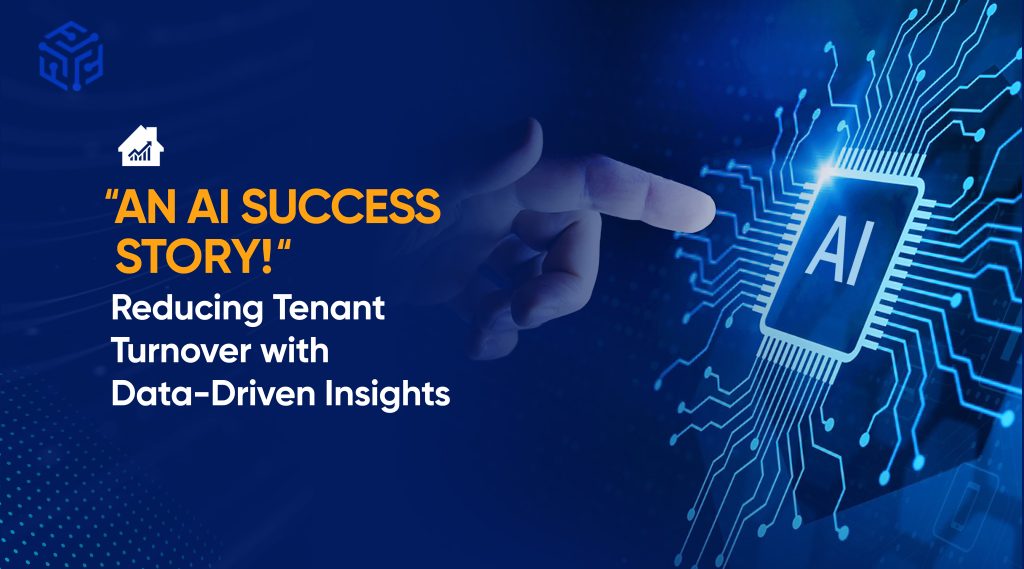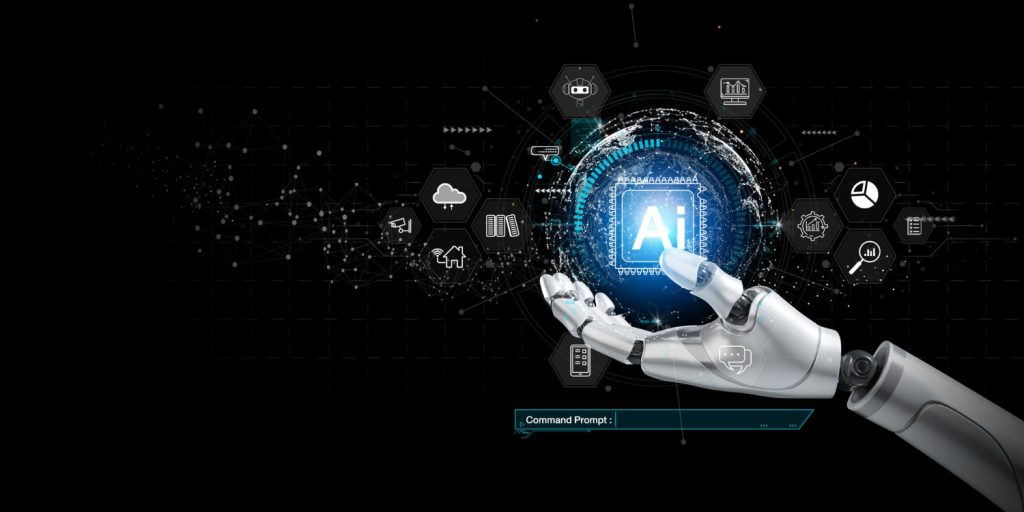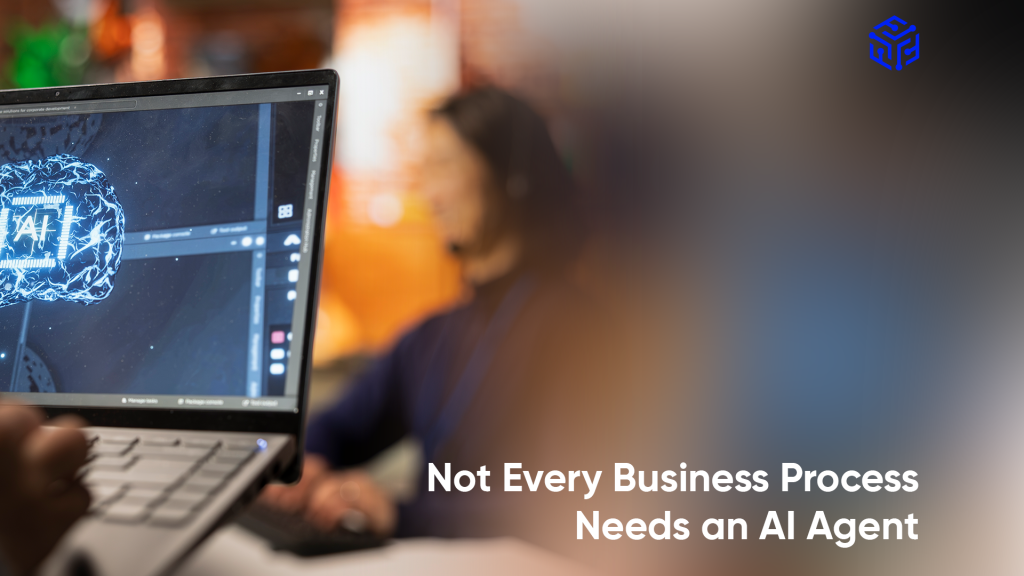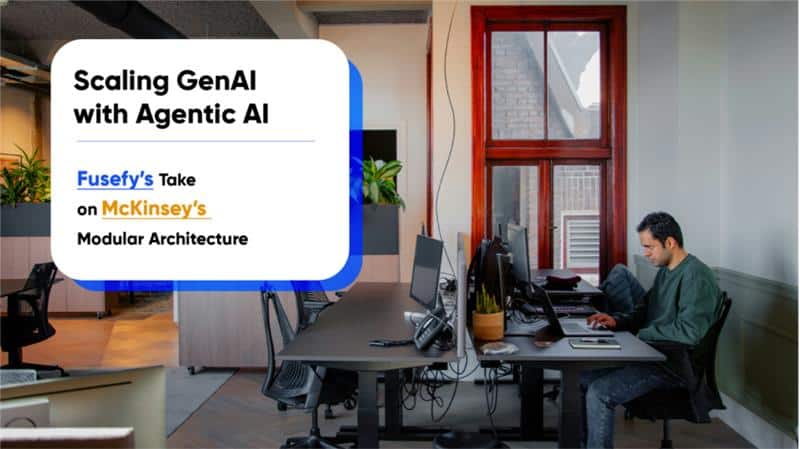In nearly every session, conference, or fireside chat today, one theme dominates the conversation: “AI and automation.” The buzz is relentless, and the sense of FOMO (fear of missing out) around AI agents, chatbots, and intelligent models is palpable. Everyone seems eager to plug AI into every possible process, hoping it will be the silver bullet for efficiency. But before we rush to put AI everywhere, it’s worth pausing to ask:
Do we really need AI everywhere?
The truth is, not every business process requires an AI agent. Sometimes, a simple solution delivers better results. Other times, the sophistication of advanced AI makes all the difference. The real challenge and opportunity lie in knowing the difference between the two.
The Three Faces of Automation
Automation has long been the backbone of efficiency, streamlining repetitive tasks, minimizing human error, and freeing teams to focus on higher-value work. But as we move from traditional automation to autonomous AI agents that can sense, decide, and act independently, the lines between assistance and autonomy begin to blur.
In this blog, let’s take a deeper look at where simplicity serves best, and where the intelligence of AI-driven agents truly adds value.
The Chatbot vs the RPA Bot vs the AI Agent
- Chatbots
Think of chatbots as polite receptionists. They greet users, answer routine questions, and guide them to the next step. They shine in scenarios like FAQ handling, basic order tracking, or scheduling appointments. They don’t often think, but they follow structured scripts.
Chatbots are best for: predictable Q&A, guiding customers, front-line support.
- RPA (Robotic Process Automation)
Now meet RPA, the clockwork specialist. This is the worker who moves data from one system to another with machine precision. RPA thrives in high-volume, rule-based processes: data entry, invoice processing, and ERP updates.
RPA is best for: repetitive backend tasks, legacy system integration, compliance-driven data handling.
- AI Agents
Finally, AI, the strategist. AI agents are like seasoned problem-solvers who can assess a situation, understand context, and take action dynamically. They combine perception, reasoning, and orchestration skills, sometimes coordinating with other AI or human operators.
AI agents are best for: customer situations that require personalization, adaptive decision-making, multi-step workflows with changing conditions.
Choosing the Right Tool for the Right Job
The pitfall many organizations fall into is defaulting to AI agents because they seem modern and powerful. But imagine assigning a strategist to stamp every letter or manually update every file. It is overkill, costly, and inefficient!
A quick decision framework
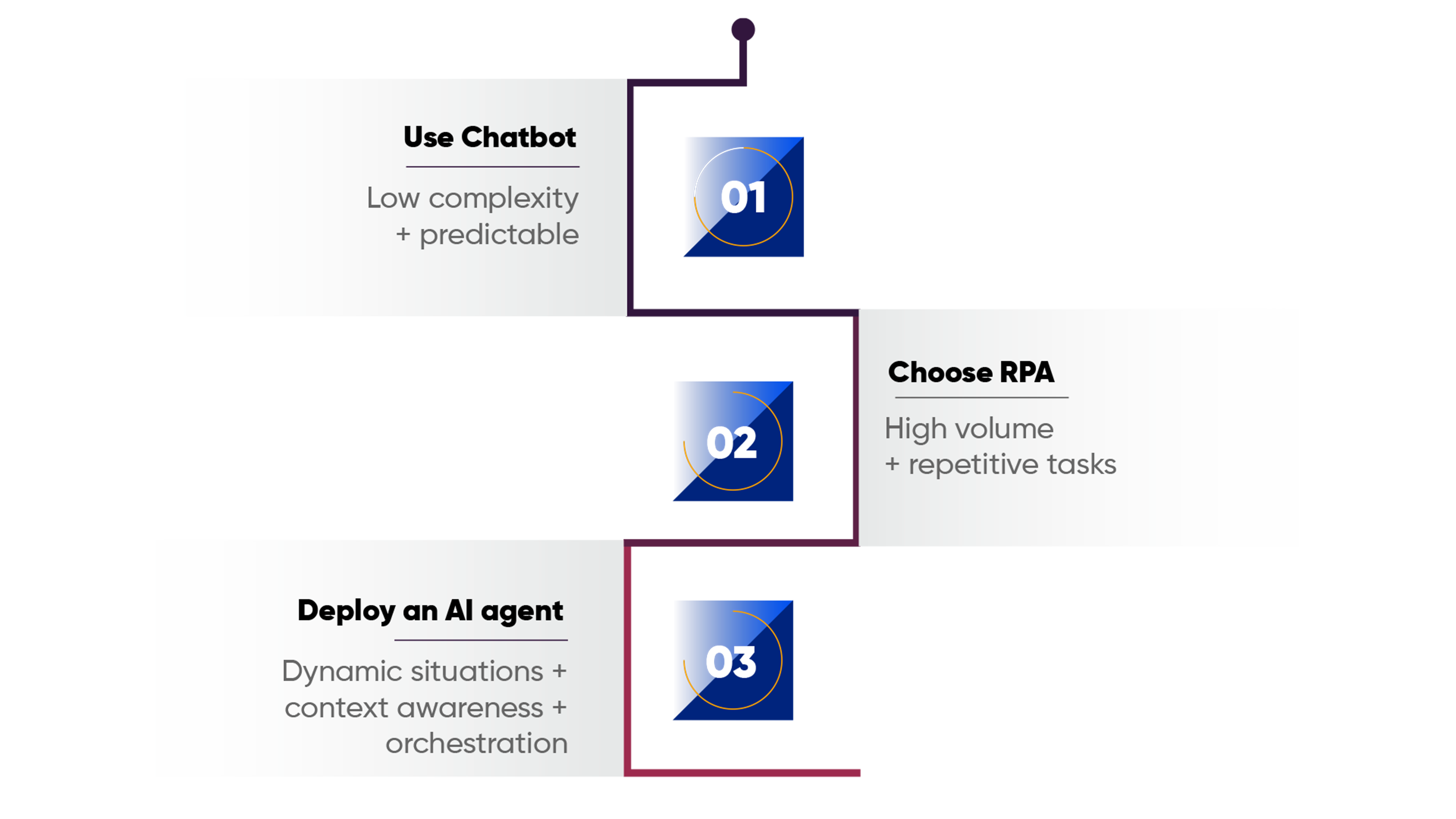
Identifying Agent Patterns in the Real World
Fusefy’s work with enterprises has shown that business process automation needs a diagnostic phase. We start by mapping your workflows against agent patterns:
- Interaction-heavy processes → conversational and guided response patterns.
- Transaction-heavy processes → structured automation with RPA patterns.
- Decision-intensive processes → adaptive orchestration and AI agent patterns.
We then assess the cost-benefit balance. AI agents are deployed only where speed, personalization, and real-time problem-solving make them outperform simpler automation.
Understanding what AI agents can do is one thing, but what does it take to build AI agents that deliver on this promise?
From Fusefy’s perspective, agentic AI represents a transformational leap in how enterprises leverage AI: not just as reactive tools, but as proactive, autonomous systems driving measurable business outcomes. McKinsey’s modular architecture frameworks offer a blueprint for enterprise AI agents. Discover McKinsey’s modular architecture and how Fusefy implements it in real-world scenarios.
How Fusefy Helps You Avoid “AI Everywhere”
With our AI Adoption-as-a-Service model, Fusefy runs a fitment assessment for every process in your roadmap.
Our structured AI Adoption Framework ensures you deploy the right level of automation by:
- Identifying where a chatbot suffices.
- Flagging where RPA delivers faster ROI.
- Defining where AI agents genuinely transform the outcome.
- Designing hybrid models where a chatbot handles the front-end and an AI agent drives the back-end decision logic.
In short, we prevent “hammer-looking-for-a-nail syndrome” and make sure automation decisions align with your business case, not just the hype.
“Automation isn’t about putting AI wherever you can; it’s about placing it exactly where it will matter.”
AUTHOR
Sindhiya Selvaraj
With over a decade of experience, Sindhiya Selvaraj is the Chief Architect at Fusefy, leading the design of secure, scalable AI systems grounded in governance, ethics, and regulatory compliance.
